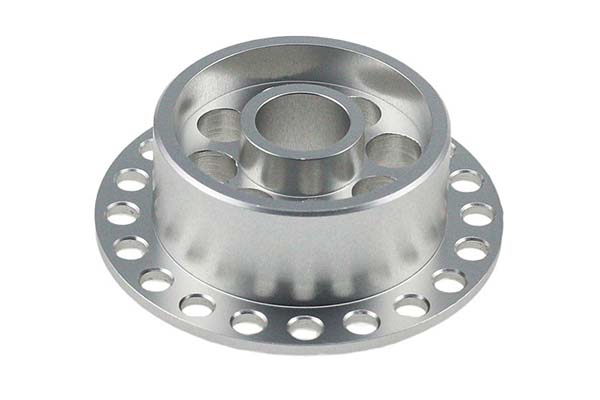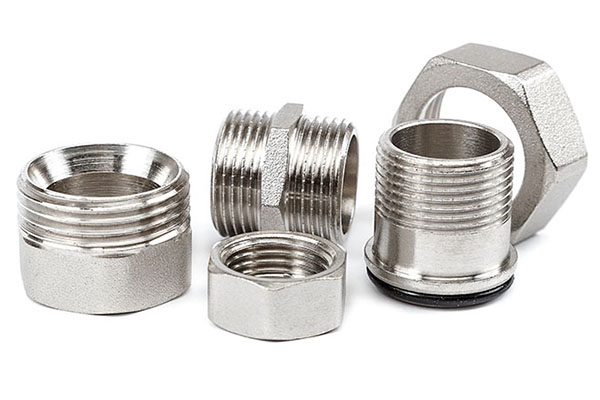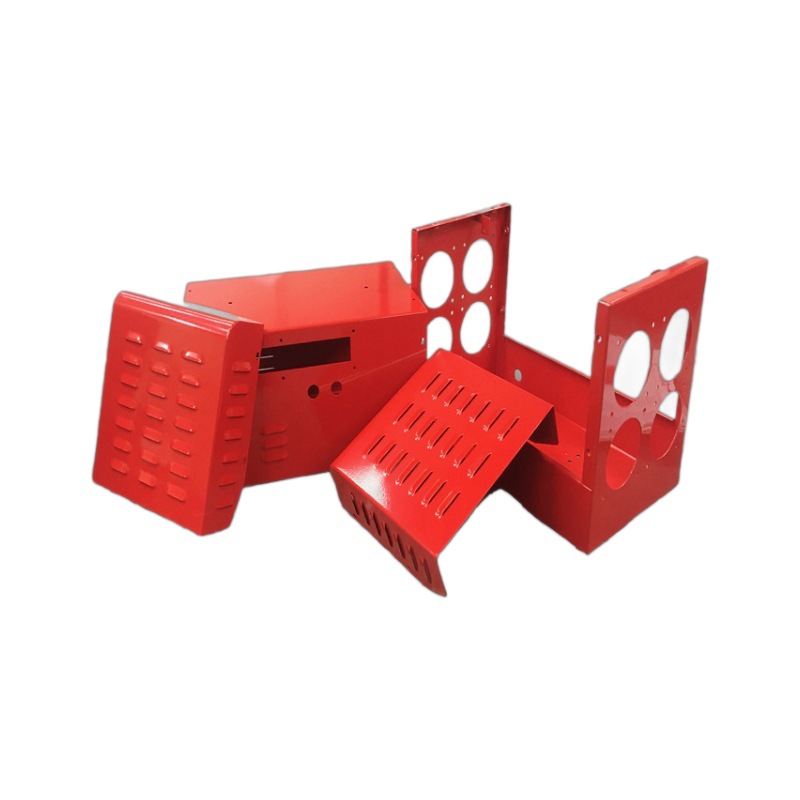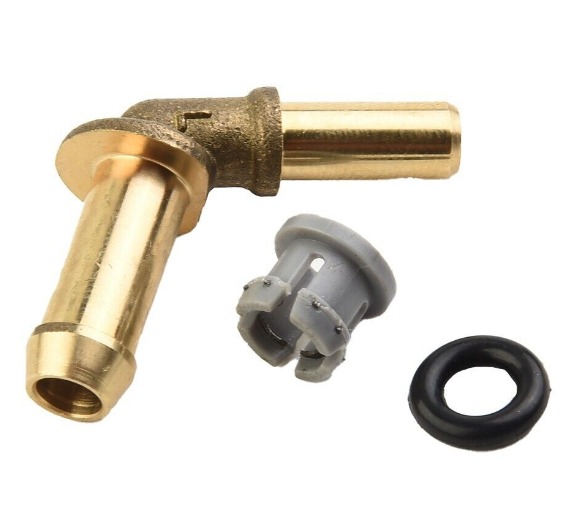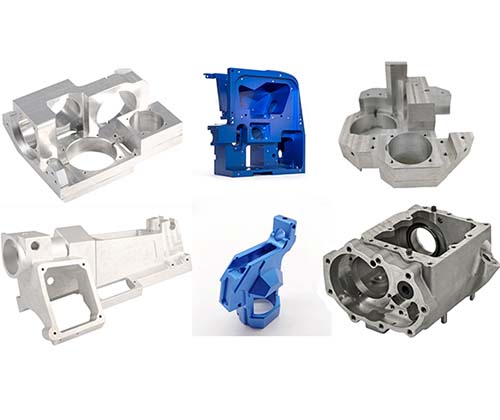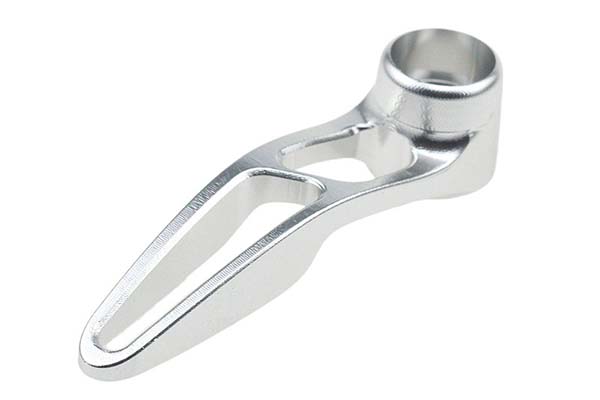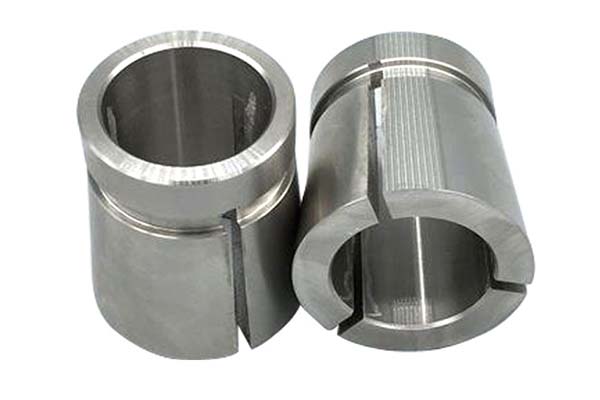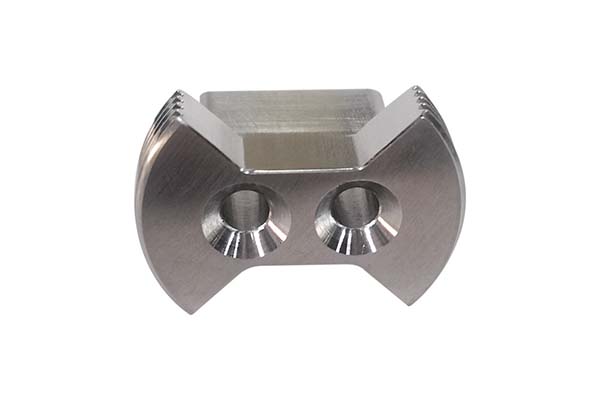Alloy steel 4140 is a workhorse in manufacturing, prized for its exceptional strength and versatility, but machining it presents unique challenges. Its high tensile strength and hardness—even in the annealed state—increase cutting forces, leading to faster tool wear compared to mild steels like 1018. Many manufacturers struggle with balancing material removal rates and tool life, while heat treatment after machining can cause dimensional shifts, requiring careful process planning. Additionally, achieving tight tolerances and smooth surface finish demands precise control over cutting parameters and tool selection. This guide addresses these pain points, offering proven strategies to optimize CNC machining Alloy Steel 4140 for efficiency, accuracy, and reliability in high-stress applications.
Material Properties
Alloy steel 4140 is a chromium-molybdenum alloy known for its excellent combination of strength, toughness, and hardenability:
- Chemical composition: Contains 0.38-0.43% carbon, 0.75-1.00% chromium, 0.15-0.25% molybdenum, 0.60-0.90% manganese, 0.20-0.35% silicon, and trace amounts of phosphorus and sulfur. This blend enhances hardenability and strength while maintaining machinability.
- Mechanical properties:
- Tensile strength: 655 MPa (95,000 psi) in the annealed state, increasing to 1515 MPa (220,000 psi) after heat treatment.
- Yield strength: 415 MPa (60,000 psi) annealed, reaching 1379 MPa (200,000 psi) when hardened and tempered.
- Hardness: 217-255 HB in the annealed state, capable of reaching 50-55 HRC after heat treatment, making it suitable for high-wear applications.
- Toughness: Excellent, with impact energy of 68 J (50 ft-lb) at room temperature, ensuring resistance to fracture under dynamic loads.
- Corrosion resistance: Moderate, superior to carbon steel but lower than stainless steel. Requires coatings or plating for use in humid or corrosive environments.
- Machinability: Rated at 65% compared to 1215 free-machining steel (100%). Its higher strength and hardness demand more robust tooling and slower cutting speeds than mild steel.
These properties make Alloy steel 4140 ideal for components requiring high strength, fatigue resistance, and wear performance, such as shafts, gears, and structural parts.
Machining Processes
Core Operations for Alloy Steel 4140
CNC machining Alloy Steel 4140 requires adjustments to handle its higher strength and hardness compared to mild steel:
- Turning: Suitable for cylindrical parts like shafts and bolts. Cutting speeds range from 90-120 m/min (300-400 ft/min) for annealed material, reducing to 45-60 m/min (150-200 ft/min) for pre-hardened stock (30+ HRC). Feed rate of 0.10-0.20 mm/rev balances material removal and tool life.
- Milling: Creates flat surfaces, slots, and complex features. Uses 4-6 flute end mills with cutting speeds of 80-110 m/min (260-360 ft/min) for annealed 4140. Depth of cut of 1-3 mm for roughing and 0.1-0.5 mm for finishing ensures efficient material removal without excessive tool load.
- Drilling: Requires carbide-tipped drill bits to handle hardness. Speeds of 60-90 m/min (200-300 ft/min) and feeds of 0.10-0.15 mm/rev prevent overheating and tool breakage. Peck drilling is recommended for deep holes (>3× diameter) to clear chips.
- Boring: Enlarges existing holes to tight tolerances (±0.01 mm), critical for bearing bores. Uses carbide inserts with positive rake angles to reduce cutting forces and improve surface finish.
- Grinding: Achieves final dimensions and smooth surfaces (Ra 0.4 μm) on heat-treated parts, ensuring tight tolerances in hardened components like tooling and precision shafts.
Machining Parameters Optimization
- Cutting speed: Lower than for mild steel to manage heat buildup—90-120 m/min for annealed 4140, 45-60 m/min for pre-hardened material.
- Feed rate: 0.10-0.20 mm/rev for turning, 0.05-0.10 mm/tooth for milling. Adjust based on tool coating and part geometry to prevent chatter.
- Coolant: High-pressure flood cooling (70-100 bar) with synthetic or semi-synthetic coolants reduces heat and flushes chips, extending tool life by 30-40%.
Tool Selection
Cutting Tools for Alloy Steel 4140
- Cutting tools:
- Carbide tools: Preferred for most operations, with grades like C-5 (ISO K30) offering good wear resistance and toughness. Fine-grain carbide (0.5-1 μm) handles high cutting forces better than coarse-grain varieties.
- High-speed steel (HSS) tools: Suitable for low-volume production or simple geometries but wear quickly—last 10-20% as long as carbide tools in 4140.
- Indexable inserts: Carbide inserts with TiAlN or AlTiN coatings reduce friction and heat, extending tool life by 50% compared to uncoated inserts. Positive rake angles (5-10°) minimize cutting forces.
- End mills: 4-flute carbide end mills with corner radii (0.5-1 mm) reduce edge chipping in milling operations. For roughing, 2-flute designs improve chip evacuation.
- Drill bits: Carbide-tipped drills with parabolic flutes enhance chip removal in deep holes, reducing breakage risk by 60% compared to standard drills.
- Tool geometry: Sharp cutting edges and adequate clearance angles (7-10°) prevent work hardening and improve surface finish. Honed edges (0.02-0.05 mm) reduce edge chipping in interrupted cuts.
Tool Life and Wear Management
- Tool life: Carbide tools typically last 30-60 minutes in annealed 4140, reducing to 15-30 minutes in pre-hardened material. Monitor flank wear and replace tools when wear reaches 0.3 mm to maintain accuracy.
- Tool wear: Primary causes include abrasion from hard alloy particles and diffusion at high temperatures. Using coated tools and optimizing coolant application minimizes these effects.
Surface Finish
Achieving Desired Surface Quality
- Surface roughness: Annealed 4140 achieves Ra 1.6-3.2 μm with carbide tools in roughing operations, improving to Ra 0.8-1.6 μm in finishing. Heat-treated parts require grinding to reach Ra 0.4 μm for bearing surfaces.
- Surface finish quality is influenced by tool sharpness, feed rate, and cutting speed. Reducing feed rate by 20% and increasing speed by 10% improves finish by one Ra grade (e.g., from Ra 1.6 to Ra 0.8 μm).
- Surface defects like tool marks or chatter result from dull tools, excessive feed rates, or machine vibration. Address by replacing tools, reducing feed, or using rigid tool holders.
Finishing Processes
- Polishing: Achieves Ra 0.025-0.1 μm for decorative or high-precision applications, though this adds production time and cost.
- Honing: Improves roundness and surface finish in bores, ensuring proper oil retention in hydraulic cylinders and bearing housings.
- Electrochemical finishing: Removes surface imperfections without mechanical contact, ideal for complex geometries where grinding is impractical.
Heat Treatment
Alloy steel 4140 responds well to heat treatment, enabling customization of mechanical properties:
- Annealing: Heating to 815°C (1500°F), holding for 1 hour per 25 mm thickness, then cooling slowly. Reduces hardness to 217-255 HB, improving machinability and reducing residual stresses.
- Normalizing: Heating to 870°C (1600°F), air cooling. Produces uniform microstructure and hardness of 229-285 HB, suitable for parts requiring consistent mechanical properties.
- Hardening: Austenitizing at 845°C (1550°F), quenching in oil. Achieves maximum hardness (55 HRC), though full hardness may not be needed for all applications.
- Tempering: Heating hardened parts to 205-649°C (400-1200°F) to balance hardness and toughness. Typical tempering cycles:
- 205°C (400°F): 50 HRC (high wear resistance)
- 316°C (600°F): 45 HRC (balanced strength and toughness)
- 538°C (1000°F): 30 HRC (maximum toughness)
- Case hardening: Carburizing followed by quenching creates a hard surface (58-62 HRC) with a tough core, ideal for gears and shafts requiring wear resistance and impact strength.
- Post-machining heat treatment is common, though it may cause dimensional changes (0.05-0.1% growth). Compensate with machining allowances (0.1-0.2 mm) to ensure final dimensions meet tolerances.
Applications
Alloy steel 4140 is widely used in industries requiring high strength and durability:
- Automotive parts: Axles, crankshafts, and gearbox components benefit from its high tensile strength and fatigue resistance. A case study showed 4140 crankshafts lasting 3× longer than those made from 1045 carbon steel in heavy-duty trucks.
- Aerospace components: Landing gear parts, hydraulic cylinders, and structural brackets leverage its high strength-to-weight ratio and toughness at subzero temperatures.
- Industrial machinery: Shafts, gears, and tooling for presses and mills—heat-treated to 35-40 HRC for a balance of wear resistance and toughness.
- Structural components: Supports and frames in heavy equipment, where its high yield strength prevents deformation under load.
- Fasteners: High-strength bolts and studs for critical applications, meeting ASTM A350 standards for low-temperature service.
Yigu Technology’s Perspective
At Yigu Technology, we specialize in CNC machining Alloy Steel 4140 for automotive, aerospace, and industrial clients. Our data shows that using AlTiN-coated carbide tools reduces tool wear by 40% compared to uncoated tools when machining annealed 4140. For heat-treated parts (35-40 HRC), we employ CBN inserts to achieve Ra 0.8 μm finishes with tolerances of ±0.005 mm. We recommend machining 4140 in its annealed state, then heat treating and finish grinding to meet final specifications—this approach minimizes tool costs and ensures dimensional accuracy. Our heat treatment partners provide consistent hardness (±2 HRC) and minimize distortion, critical for precision shafts and gears. With ISO 9001 and AS9100 certifications, we deliver 4140 components that balance strength, precision, and cost-effectiveness for high-stress applications.
FAQ
- Why is Alloy Steel 4140 preferred for high-stress applications?
Alloy steel 4140 offers exceptional tensile strength (up to 1515 MPa after heat treatment) and toughness, making it ideal for components subjected to heavy loads, fatigue, and impact. Its ability to be heat-treated to 50-55 HRC provides wear resistance, while chromium and molybdenum enhance hardenability and high-temperature performance.
- How does machining Alloy Steel 4140 differ from mild steel?
CNC machining Alloy Steel 4140 requires lower cutting speed (90-120 m/min vs. 150-250 m/min for mild steel) and more robust tooling (carbide vs. HSS) due to higher strength and hardness. It also demands better coolant systems to manage heat buildup, and heat treatment after machining adds complexity compared to mild steel’s simpler processing.
- What heat treatment is best for Alloy Steel 4140 used in automotive gears?
For automotive gears, hardening to 50-55 HRC followed by tempering at 316°C (600°F) achieves 45 HRC—balancing wear resistance (surface) and toughness (core). This ensures gears withstand contact stress and impact loads while maintaining fatigue resistance. Case hardening is optional for added surface hardness in high-wear applications.
